Non - Xeriscape.
Common Landscape Plants. Shrubs, Flowers, & Trees.
For The Arizona Desert Environment
Pictures, Photos, Images,
Descriptions, & Reviews.
Aleppo Pine Tree, Pinus halepensis.
We Are Proud Of Our SafeSurf Rating!
Click On Any Of The Following Links By Amazon.Com
To View Tools For Desert or Arizona Gardening. No Obligation!
 |
| Aleppo Pine Tree, Pinus halepensis |
|---|
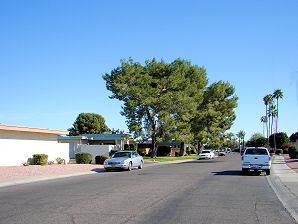 | 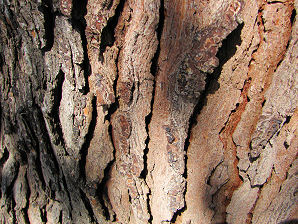 |
| Aleppo Pine Tree, Pinus halepensis Large Tree | Aleppo Pine Tree, Pinus halepensis Beautiful Bark |
|---|---|
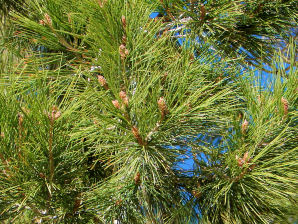 | 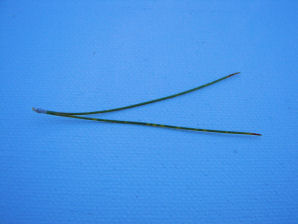 |
| Mediterranean Pine Tree, 2 - 2 1/2 " Needles With Buds | Jerusalem Pine Tree, 2 Needles Per Bundle |
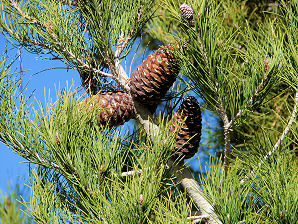 |  |
| Aleppo Pine Tree, Immature Pinus halepensis Cones | Aleppo Pine Tree, Immature Pinus halepensis Cone |
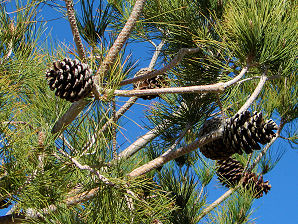 | 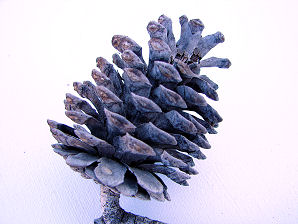 |
| Aleppo Pine Tree, Mature Pinus halepensis Cones | Aleppo Pine Tree, Mature Pinus halepensis Cone |
Aleppo Pine Tree.
We wish to thank Wikipedia, the free encyclopedia for some of the information on this page. We share images and information with Wikipedia. Pinus halepensis, commonly known as the Aleppo Pine, is a pine native to the Mediterranean region. Their range extends from Morocco and Spain north to southern France, Italy and Croatia, and east to Greece, all over Malta and northern Tunisia, and Libya, with an outlying population (from which it was first described) in Syria, Lebanon, southern Turkey, Jordan, Israel, and Palestinian territories, where it is known as the Jerusalem pine. Pinus halepensis, the Aleppo pine, is generally found at low altitudes, mostly from sea level to 660 feet, but can grow at an altitude of up to 3,300 feet in southern Spain, well over 3,900 feet on Crete and up to 5,600 fteet in the south, in Morocco, Algeria and Tunisia. The Greeks traditionally cut down an Aleppo pine every year, decorating it with flowers and ribbons in honor of the god Attis. This custom is believed to have been adopted by the Europeans in honor of Christ, making the Aleppo the first Christmas tree. While it is a two-needled pine with short, thin needles and small cones, each about 3 inches long. Bunches of three needles are not uncommon. The Aleppo Pine has ancient associations with human culture; it was the source of a resin used in Egypt for embalming and is referred to in the Bible under the name fir.
Quick Notes:
Height: Up to 70 feet in height and 20-40 feet in diameter at maturity.
Flowers: Dioecious; on dense, hanging many-branched 1 foot long clusters, creamy yellow - white, opening from a husk-like structure, appearing periodically throughout the year.
Flowering Time: Mid March - May.
Buds: Monoecious; males cylindrical, in a tight cluster at the branch tips; females small, red - purple with loose scales at branch tips.
Cones: 3 - 5 inches long, rounded, oval or oblong in shape.
Trunks: Up to 24 inches, some exceptions up to 39 inches!
Bark: Light gray and smooth when young, turning red - brown and furrowed, with rounded scaly ridges.
Leaves: Evergreen, Short needles, 2 - 3 inches long, usually 2 per bundle, fine appearance.
Found: Native to the to the Mediterranean region. Found throughout Arizona at lower elevations. The USDA claims it is now native to the USA (CA).
Hardiness:
Soil pH requirements:
Sun Exposure:
Elevation: In Arizona usually at 200 to 1,800 feet. A desert pine tree. However they have been found up to 5,600 fteet in Morocco, Algeria and Tunisia.
Habitat: Lower elevations where water is available. It grows well in sand, sandy loam, clay and other heavy soils. It needs good drainage and aeration. It is remarkably tolerant of alkali. In its native habitat it is found at the base of "barrancos" where, even during the dry season, a small amount of water is always present in the soil.
Miscellaneous: Photos Taken at Sun City, January 21, 2006.
|
We Are Proud Of Our SafeSurf Rating!
Click On Any Of The Following Links By Amazon.Com
To View Tools For Desert or Arizona Gardening. No Obligation!
| © 1966 - Present, Audrey, Eve, & George DeLange |





